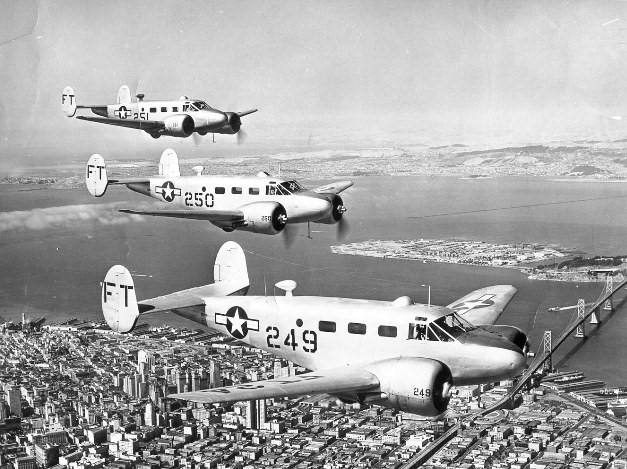George Steiner, an Interview by Chuck Asbury



With $400, George bought his first airplane, a Fleet biplane, in 1938. Then, armed with a “how-to” book, George taught himself aerobatics; survived numerous forced landings occasioned by a cantankerous Kinner; and managed to tally 300 hours while war clouds gathered abroad.
Deemed “long” on experience, Uncle Sam commissioned George a second lieutenant in 1941, and posted him immediately to Ferry Command. During weeks of furious training Lt. Steiner checked out in the P-38; A-20; C-47; B-25; B-26 and PBY. His real work began after transferring to Memphis. The mission: Ferrying aircraft to Europe.
Jumping off from Miami, P-38s and A-20s destined for Russia crossed to Cuba or Puerto Rico, Dutch Guinea, then landed in Natal where air crews mustered. With but one navigator in the lead aircraft, flights of ten planes took off for Ascension Island, a 5 by 7 mile dot 1400 miles out in the South Atlantic. Their high-tech “black boxes,” consisted of the forerunner to the ADF known as a “left-right indicator,” and a whiskey compass. Jockeying demanded of formation flying only burned precious fuel, so flights soon became scattered, and navigator input rendered unattainable under mandated radio silence.
Alone over a vast ocean, strict dead reckoning ruled. Knowing of the flights, lurking German submarines broadcast spurious navigation signals, urging course changes of barely a few degrees. Many anxious pilots yielded to the seductive siren call, deviating enough to miss the tiny island, exhaust their fuel searching in vain for a landfall, then hopelessly ditch at sea. Until the lessons were learned, the false signals, coupled with ancient and questionable equipment, resulted in 80% casualties on early flights. Once making the African continent, with occasional blessings of three-star and sunline navigational fixes, flights droned on to Accra, Kano, Madugro, Khartoum, Bahrain, Adan, Karachi and ultimately, Iran or Iraq. Once, delivering an ice-encrusted C-47 over the Hump and into China, his desperate crew tore away a cabin heater hose and frantically played it on the frozen-over windscreen. Finally, as the clock ticked down, they managed to clear a peephole just large enough for George to pick out the landing field.
After flying C-87s for the famous Fireball Express out of Miami, George shifted to the North Atlantic, ferrying B-24s and B-17s, complete with the crews who would later man them. From Bangor, flights of 50 launched for Bluie-West One in Newfoundland (where he shared time with famed aviation author Ernest Gann), then to Greenland, Iceland, Ireland, and St. Johns Scotland or London. Two-thousand gallon fuselage tanks allowed 12 hour endurance, but so far were the distances, fuel starved engines sometimes quit while taxiing from the runway. Even with fuel, George estimates enduring “maybe ten, no sweat” engine out situations.
After promotion to captain, George transferred again, this time to fly the dangerous shuttle between England and North Africa. So intense was German ME-109 fighter coverage over the Bay of Biscay that the gauntlet running flights launched only in IMC—at night.
When hostilities in Europe ended, George was sent to Casablanca as a test pilot, readying P-51s and P-47s for the massive shift of airpower to the Pacific Theater.
By V-J Day, George amassed over 6,000 hours, one-half of that time in hard IFR, and had dozens upon dozens of Atlantic crossings in his logbook. Today, he admits to 12,000 plus hours, and packs ATP and CFII ratings. In his equally busy civilian life, he has owed a Super Cub, two Apaches, Helio Courier, two Beech E-18s, Aero Commander, Twin Bonanza, 310, a pair of 320s, 414 and a Duke.
Our supremely accomplished Command Pilot friend remains active in the Sheriff's Air Squadron since joining in 1957. And guys, ask George, if you want to hear about real cross-country and open ocean flying.
Written by Chuck Asbury